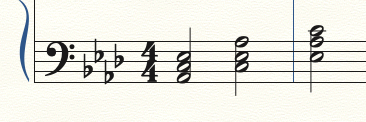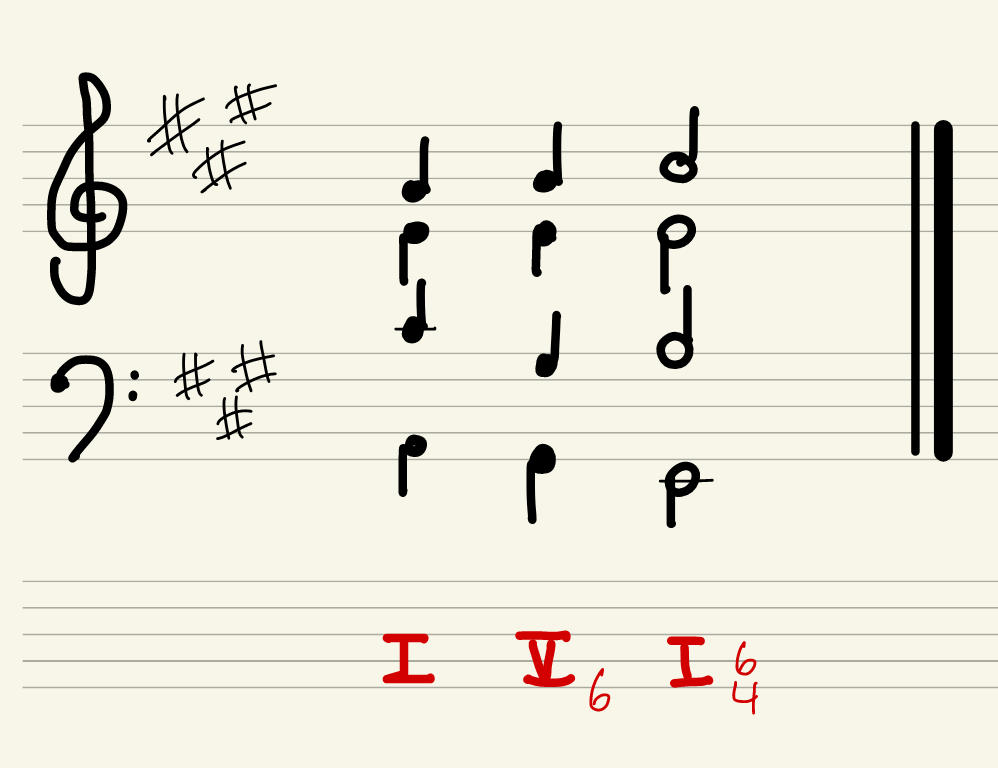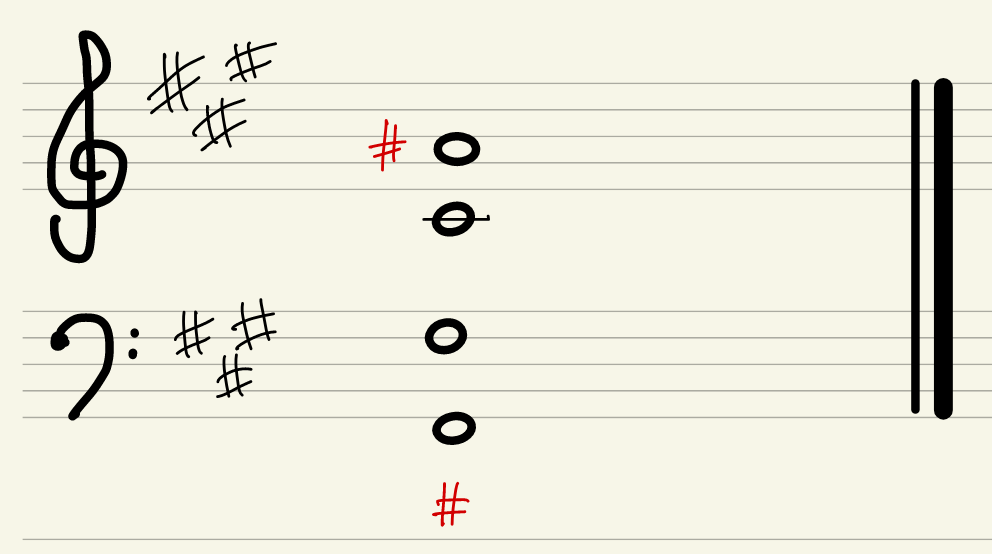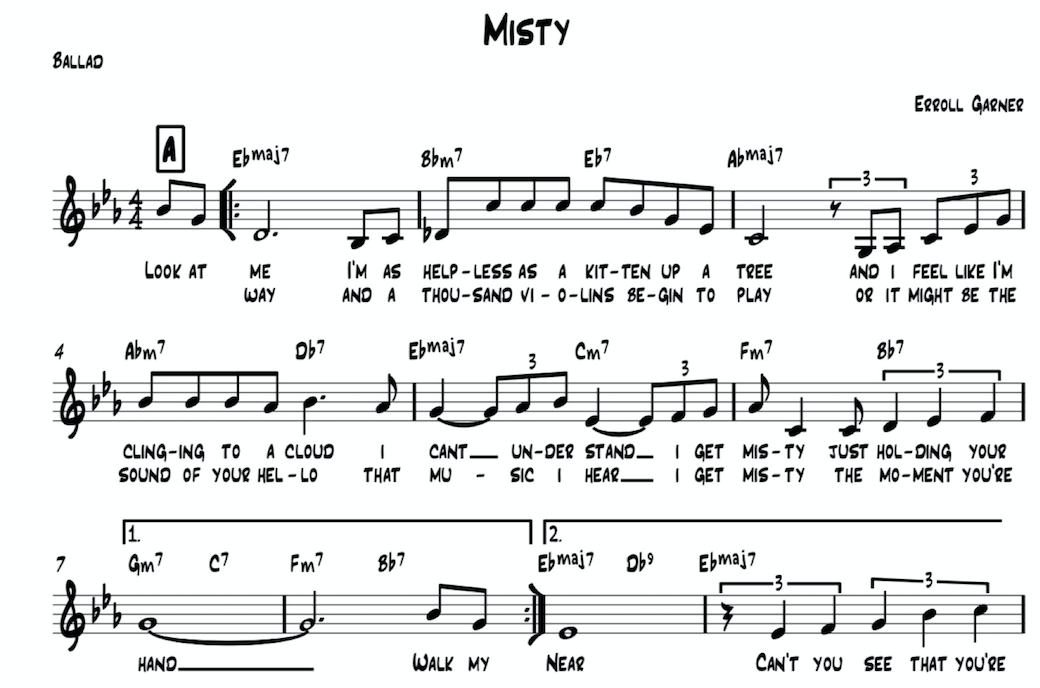3.3 Chord Inversions and Figures: Introduction to Figured Bass
7 min read•june 18, 2024
AP Music Theory 🎶
72 resourcesSee Units
All the notes of a chord can be rearranged so that the order from bottom to top may be different. The most important note is the bass note. When the root of the chord appears in the bass, we consider this to be in root position. If a different chord member appears in the bass, we have was is called a chord inversion. Take a look!

Example: Chords in Ab Major
We can see above that when the third of the chord is in the bass, the chord is considered to be in 1st inversion. When the fifth is in the bass, the chord is considered to be in 2nd inversion. During the Common Practice Period (CPP), a.k.a. The Baroque era, chord inversions were labeled using Arabic numerals (the numbers you and I normally know and use: 1, 2, 3, etc.) to denote the intervals seen above the bass note. This system was used extensively by Bach, Handel, and Vivaldi. We call this figured bass.

No, not that type of bass 🙄, but keep reading!
Figured Bass
Figured bass was an important part of the musical language of the Baroque era and was used extensively in the music of the time. It allowed composers to indicate the harmonies of a piece of music in a concise and efficient manner, and it was an important tool for improvisation and interpretation. Figured bass fell out of favor in the classical and romantic periods, but it is still used by some musicians and scholars as a tool for analyzing and understanding the harmonies of music from the Baroque era. Not to mention, we will have to write in figured bass for the AP exam!
How does Figured Bass Work?
The system of figured bass consists of a bass line and a series of numbers written below the bass line. The numbers indicate the intervals above the bass note that should be played or sung, and they are called "figures." When we are looking at a composition through a harmonic lens, these figures (usually written in Arabic numerals) are used to signify the corresponding inversions to each chord.
They indicate the exact interval between the bottom note and the top note when an inversion is in a closed position. Closed position means that the notes are as close as possible, and the chord is some cycling of the 1-3-5 order. For example, root position will be in the order 1-3-5, first inversion will be in the order 3-5-1, and second inversion will be in the order 5-1-3.
Let’s use the example of G Major in order to see how figured bass works. In root position, the order of the I chord will be G-B-D. There is a 5th between G and D, and a 3rd between G and B, so we can write this as a 5/3 chord. When we also analyze the harmonies of a composition through Roman numerals, we can attach the Arabic numerals to the side of Roman numerals to provide information about the inversion (Arabic numerals) of the chord in the key (Roman numerals). So, we could write this as a I 5/3 chord, where 5 is a superscript and 3 is a subscript. Usually for root position, though, we will just write it as a I chord.
In 1st inversion, the notes will be in the order B-D-G. The interval between the bottom note and the top note (B to G) in the closed position is a 6th, and the interval between the bottom note and the middle note (B to D) is a 3rd. Therefore, the first inversion is sometimes indicated that it is a 6/3. But almost all the time the 3 is omitted. We would just write this chord as a I^6 chord
Similarly, in 2nd inversion, the notes will be in the order D-G-B. The number below (such as when we use it in the 2nd inversion) refers to the distance between the bottom note and the next note up, in a closed position. The distance between D and G is a 4th. The outer interval is a 6th, since the distance between the bass note (D) and the outer note (B) is a 6th. Hence, we would write this note as I 6/4.
Take note that this is just an explanation of how figured bass was derived. A G-D-B chord is still a I chord in G major, and a B-D-G is still a I 6/4 chord in G Major. The type of inversion (first, second, third, etc.) only depends on the bottom note of the chord.
Also, note that these numbers work for any chord. A ii6 chord is still a first inversion ii chord, and a V6/4 chord is still a second inversion V chord.

When we analyze the harmonies of a composition through Roman numerals, we can attach the Arabic numerals to the side of Roman numerals to provide information about the inversion (Arabic) of the chord in the key (Roman). It would look a little something like this:

In figured bass, a figure with a slash (/) or a plus sign ➕ indicates the pitch denoted by that figure is to be raised a half step. Usually, this happens to a 6, meaning sharp the note that would be a 6 above the bass in closed position. For example, if you are in c minor and you have a seven chord with the 6 crossed out, that means that we are in first inversion (because of the sixth) and we are raising the 6, so we are raising the Bb. Therefore, the chord will be D-F-B natural.
Notice that this implies that the seven is diminished. In this case, since we are in minor, a vii°6 would be enough to denote this chord.
Rather than the slash or the plus, sometimes there will just be an accidental (flat, sharp, or natural) to the left of the figure (the Arabic number). This means to flat, sharp, or natural whichever note corresponds to that figure.
Remember: if that note happens to be doubled, you should make sure to do that action to both of the instances of that note.
An accidental appearing alone, (without an Arabic numeral) indicates that the third above the bass should be altered according to the accidental.

Basso Continuo
Basso continuo is a type of bass line that employs figured bass, and it is what you will use when you are in the AP exam. In basso continuo, a bass line is played by a bass instrument, such as a cello or double bass, and chordal accompaniment is provided by a keyboard instrument, such as a harpsichord or organ. The bass line (aka the bottom notes of each chord) is notated in standard notation, and the chordal accompaniment is indicated using figured bass notation, which consists of numbers written below the bass line to indicate the intervals above the bass note that should be played.
When you realize a figured bass, you are filling in the upper voices to the basso continuo.
Lead Sheet Symbols
Another system of labeling chords takes the root and uses a capital letter-name (such as G) and attaches the quality of the chord (Major, minor, etc.) with its abbreviation. For example a G-Major chord would look like: GM. A minor chord would have a lowercase m, such as the chord Dm. You might see E+ for an augmented E chord, or F#° for an F-sharp diminished chord.

If you want to write a seventh chord, you might write it as a Mm chord, a mM chord, etc.
You can find this system of labeling chords in lead sheets, and the chord symbols are called lead sheet symbols. A lead sheet is a simplified version of a piece of music that includes the melody, lyrics, and chords of the song. It is a useful tool for musicians who want to play or sing a song but do not have access to the full score or are unfamiliar with the song. If you’ve played a pop song on a guitar or a ukulele, you might have used lead sheets, too.
A typical lead sheet includes the melody of the song written out in standard notation, with the lyrics written below the melody, and the chords written out in terms of the lead sheet symbols. Lead sheets are typically not as detailed as full scores, and they do not include information about the specific instruments or voicings of the chords. Instead, they provide a general outline of the song that musicians can use to create their own arrangements and interpretations. As such, Lead sheets are often used in jazz and popular music, where they provide a flexible and adaptable framework for improvisation and interpretation.

🦜 Polly wants a progress tracker: For a 2nd-inversion subdominant chord in the key of F, what would its figured bass symbols be? How do you spell that chord?
Browse Study Guides By Unit
🎵Unit 1 – Music Fundamentals I (Pitch, Major Scales and Key Signatures, Rhythm, Meter, and Expressive Elements)
🎶Unit 2 – Music Fundamentals II (Minor Scales and Key Signatures, Melody, Timbre, and Texture)
🎻Unit 3 – Music Fundamentals III (Triads and Seventh Chords)
🎹Unit 4 – Harmony and Voice Leading I (Chord Function, Cadence, and Phrase)
🎸Unit 5: Harmony and Voice Leading II: Chord Progressions and Predominant Function
🎺Unit 6 – Harmony and Voice Leading III (Embellishments, Motives, and Melodic Devices)
🎤Unit 7 – Harmony and Voice Leading IV (Secondary Function)
🎷Unit 8 – Modes & Form
🧐Exam Skills
📚Study Tools

Fiveable
Resources
© 2025 Fiveable Inc. All rights reserved.